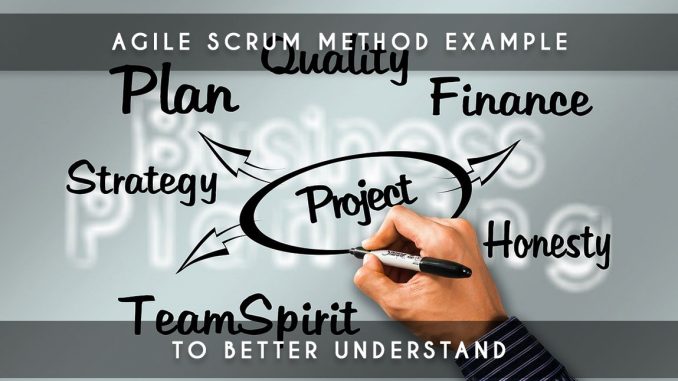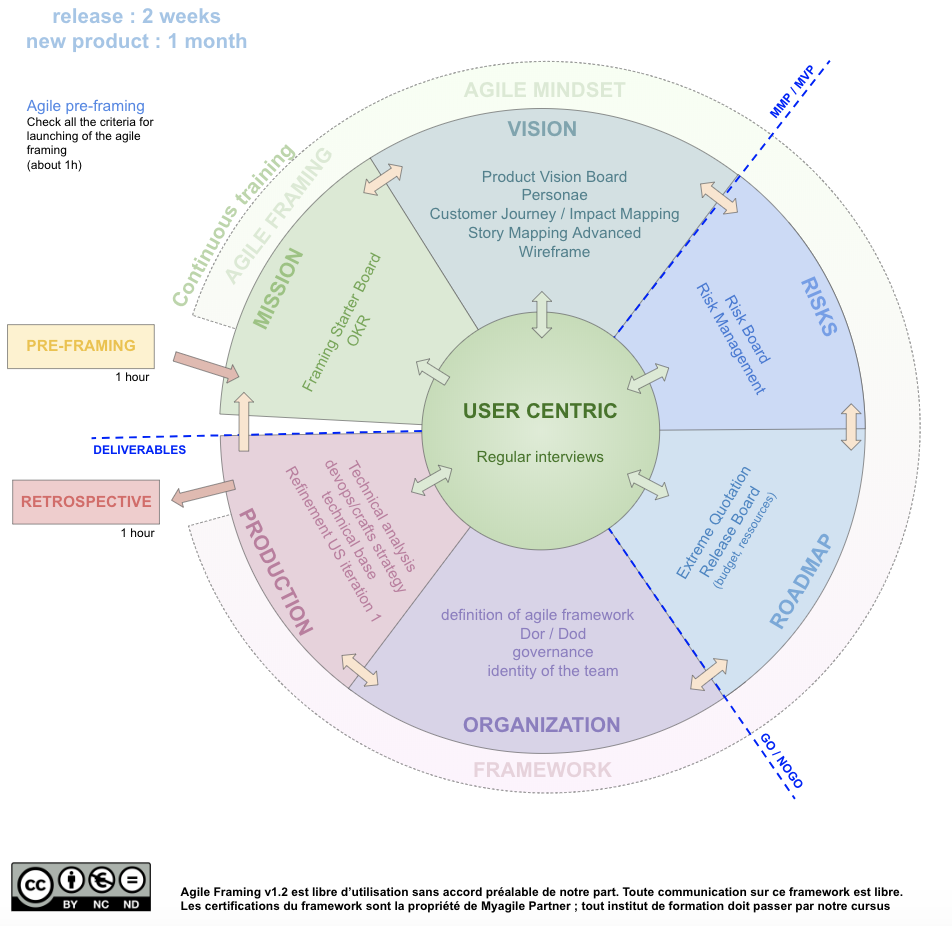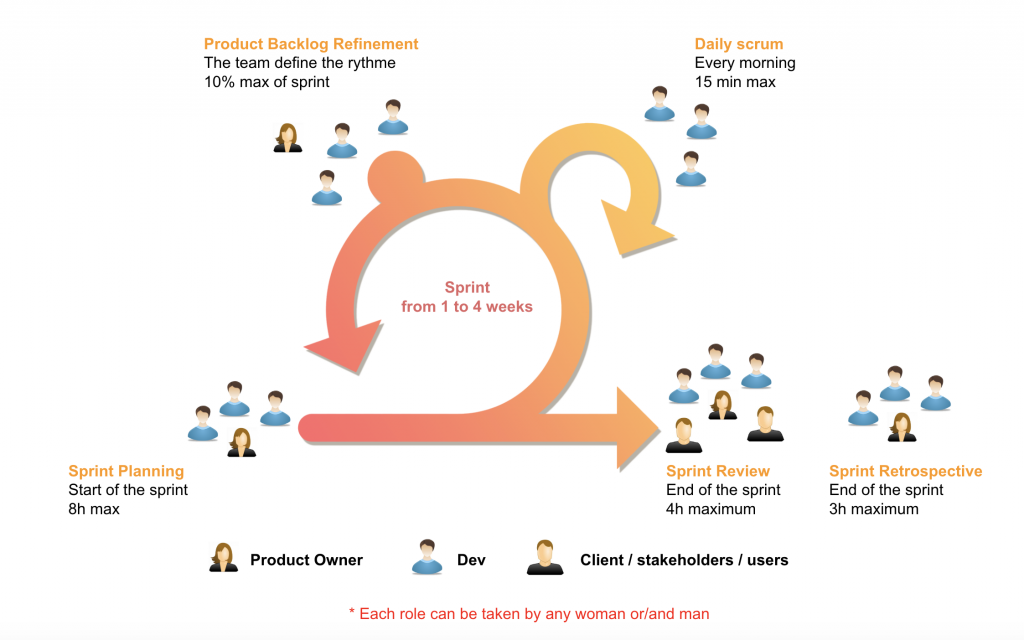
Understanding the Agile Scrum Method: An Example
Here is an article to help you understand the Agile Scrum method through an example.
Let’s Take a Subject for Our Example
To start, let’s consider a new blog project dedicated to the Agile Scrum method, named “scrum.sg”. The blog will focus on:
- Presenting all the elements defined by the Scrum framework
- Featuring elements exclusively from the Scrum guide
- Providing clear illustrations
While the subject is simple, it will lay the foundation for our example.
Starting the Agile Scrum Method
Starting a project with the Agile Scrum method requires careful preparation.
Begin with a Preparation Phase
I recommend starting with a preliminary vision of the backlog. To do this, consider using the Agile Framing approach, which provides a 100% Agile product launch framework. This approach will help you:
- Align the team around the mission and objectives
- Create a vision of the product
- Identify risks and create a product roadmap
- Define the team’s organization and governance

Link: Agile Framing Website
At the end of the Agile Framing process, you will have a first backlog with some items “ready” for development and other less detailed items. During this process, the team will define the Definition of Done, which sets the criteria for an item to be considered completed and potentially deployable to production.
Article: Definition of Done (DOD)
Starting Your First Sprint
As a reminder, a sprint begins with sprint planning and concludes with a sprint review and retrospective. The Scrum Master supports the team’s independence throughout the sprints.

Agile Scrum Method: Sprint Planning
During the sprint planning, the Scrum team will define the sprint backlog, which includes:
- The sprint goal
- Items aligned with the sprint goal
- The implementation plan for these items (technical subtasks, scheduling, etc.)
For our blog example, the Scrum team defines the following:
Sprint Goal: “Display a first version of the blog ‘scrum.sg'”
Selected Items by the Team:
- As a visitor, I want to see the home page with the latest blog posts
- (and) As a visitor, I want to be able to obtain the RSS feed for articles
- As a visitor, I want to be able to read an entire article
To adhere to the requirements of the Scrum Guide, the Product Owner has added:
- Gherkin tests to explain how to test each item
- The value of each item
- The estimate for each item, as proposed by the development team
The development team and the Product Owner then collaborate on how to fulfill these needs during the sprint planning. This planning is crucial and often underestimated.
The Team Must Discuss the Solution
The solution proposed by the development team is to use WordPress to fulfill the three needs, involving its installation and configuration.
The Product Owner approves the solution, and the development team suggests adding more items to the sprint. They are confident that they can achieve more within the sprint duration.
In addition, the team informs the Product Owner that certain items can also be completed due to this solution:
- As an author, I want the capacity to write an article on the blog
- As an author, I want the administration part of the blog to be secured by login/password access
This example illustrates how the “plan” can influence the entire sprint backlog and its dynamics. Sprint planning involves not only selecting items but also discussing how the development team will approach them.
The Team Must Split into Technical Subtasks
Since the user stories are not technical, the development team breaks down each user story into technical subtasks.
As a visitor, I want to see the home page with the latest blog posts
The development team defines technical subtasks that align with the chosen solution. For example:
- Install a development environment
- Set up a testing environment
- Install WordPress
- Configure WordPress for ‘scrum.sg’
- Customize the home page to display the latest articles
- Create placeholder articles for display testing
The development team also determines the order in which user stories will be developed, at least for the initial ones.
Agile Scrum Method: Realization Phase
With the completion of sprint planning, the development team enters the realization phase. When an item is completed, one or more team members review it against the criteria of the Definition of Done before marking it as “done”. This evaluation is solely the responsibility of the development team; the Product Owner does not perform this evaluation.
Agile Scrum Method: Daily Scrum
Each morning, the team holds a daily scrum meeting. During this meeting, each team member explains:
- What they have accomplished since the last daily scrum
- Their plans until the next daily scrum
- If there are any alerts or issues to share with the team
Agile Scrum Method: Sprint Review
The Product Owner invites the development team and stakeholders to participate in the sprint review. The Product Owner reviews the sprint’s objective, such as “Display a first version of the blog ‘scrum.sg'”.
During the review, the development team showcases completed items and those that were not finished during the sprint. The team discusses encountered challenges and whether the sprint goal was achieved.
Following this, the team presents the first version of the blog to gather feedback. Based on the feedback, the Product Owner adds new items to the product backlog that need further detailing. The participants collaboratively plan the product’s development for the upcoming sprint.
Agile Scrum Method: Sprint Retrospective
After the sprint review, the Scrum team conducts a sprint retrospective. This session aims to identify areas for improvement that can be implemented in the next sprint.
The team defines the following improvements:
- Enhance visual management
- Assess WordPress plugins to prevent duplication of work
- Review WordPress security aspects
Conclusion
This sprint example provides insight into the Scrum process. For more informative articles about Scrum, explore this blog.



Be the first to comment